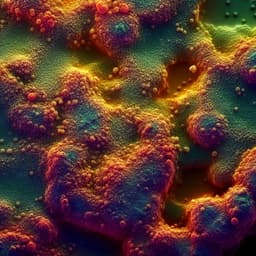
Medicine and Health
Differential survival of potentially pathogenic, septicemia- and meningitis-causing *E. coli* across the wastewater treatment train
D. Yu, K. Ryu, et al.
This study by Daniel Yu, Kanghee Ryu, Simon J. G. Otto, Paul Stothard, Graham Banting, Norma Ruecker, Norman F. Neumann, and Shuai Zhi reveals alarming insights into the survival of pathogenic *E. coli* strains throughout wastewater treatment, highlighting their potential risks in transmitted wastewater effluents.
Playback language: English
Related Publications
Explore these studies to deepen your understanding of the subject.







